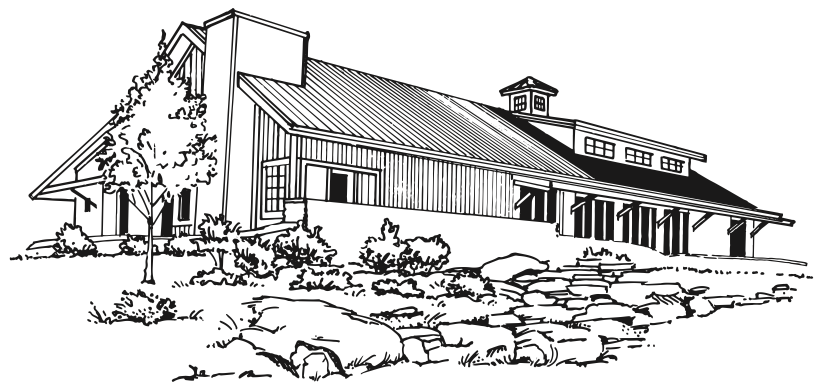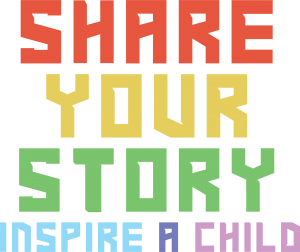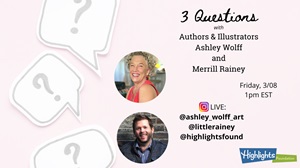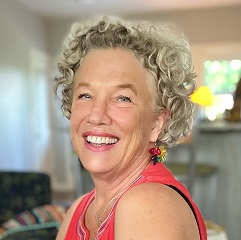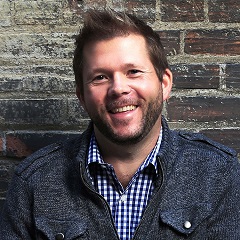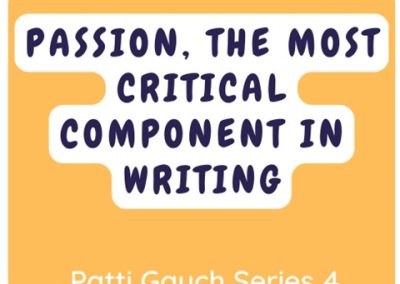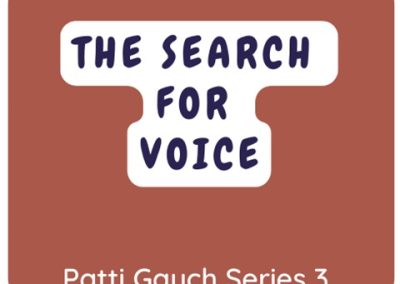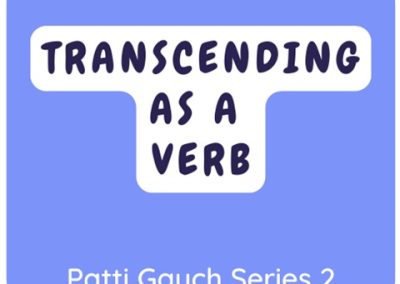Ashley Wolff and Merrill Rainey joined Highlights Foundation Social Media Manager Cat Galeano on Instagram Live to talk about our Working (Playing) Retreat: Artistic Play and Exploration.
Watch the conversation below. (Please note: closed captions are being added to the video below. When they are finished, you can see them by hovering over the bottom of the video and choosing the “CC” icon.)
Full Transcript:
Cat:
A big hello to our Highlights Foundation family. We are so happy to have you with us. And for those that may not know, I’m Cat Galeano. My pronouns are she, her, and I’m the social media manager for the Highlights Foundation, joining you from Westchester, NY on the traditional lands of the Siwanoy people. Apart from all the fun things I get to do at the Highlights Foundation, I’m also a writer and a reader who is very excited to have this lunchtime chat with our friends, hosts and special guests Ashley Wolff and Merrill Rainey, who will be hosting our working retreat…”working but playful retreat” called Artistic Play and Exploration, taking place on our campus next month, April 14th through the 17th.
And before we dive in, I just want to remind our viewers that joining in on any Highlights Foundation sessions to do so with no hate, no harm, no harrassment of any kind.
Now let’s get started. So my first question for you is for Ashley. Ashley, you and Denise were pretty adamant about including playing as part of this working retreat title. (Just want to remind people that Denise Fleming is also going to be a host on this retreat. She could not join us. But she’ll definitely be live in person. Oh, there she is!
Ashley:
There she is. Good one, Merrill.
Merrill:
She’s not without us.
Ashley:
Thank you!
Cat:
[Laughing] Denise will be on campus and also here in pillow form, which is even so, so epic. So you and Denise were pretty adamant about including “playing” that word in the working retreat title and for both of you–Uh, sorry– why is that? Why was that so important to include that word “playful” in the title?
Ashley:
Well, both Denise and I are, you know, work, work hard, play harder type of girls. So, but, from my point of view, it’s that, you know, when we’re in a workshop environment like that, we want to be bonded with each other and have camaraderie. And I think play is a much better way to create that atmosphere than, than just teacher student relationships. So we started doing games and equalizing exercises where everybody gets to bond with everybody else and, you know, we’ve had the same group of women, mostly women come back year after year after year just to see the people they met in the first, in the first workshop, and hopefully us too.
So and Denise’s response, which she sent me, was that it opens up path to creativity that you just never know what’s going to come up in when you apply play to work. And so we both believe that experimentation and not worrying about mistakes, goofing around is a good way to approach artwork.
Cat:
That’s awesome. And I also want to tell people that, like the working retreat model we have been sort of quietly putting into place since the tail end of last year. So because we just heard so much from all our, our, our people that have frequented campus about wanting a place where they can learn, but also take time to write. So , his is why we sort of recreated what our our workshops were on campus and and sort of modeled them after this working retreat style to allow people to–sorry, I’m reading the comments with Denise had is a hit from everyone. So to allow people to get together in that community part also have that writing part have that community part, but also have that learning time. So it’s like a nice Little mix of all those things. And I guess for both of you, how does play make its way into your creative process?
Ashley:
Merrill, why don’t you go ahead?
Merrill:
You want me to go ahead? OK, well it it, it plays a huge impact for me. I, I think it was…I mean, it’s been quite a few years for me now that, doing commercial illustration work for so long, it got really stagnant in…I was going through some rough periods of life happenings and I needed the, to figure out how to get out of a rut and so I started picking up different..looking at what other people were working with and just started playing with different medium to try and get out of that rut and that let me down a whole nother…took me from the commercial world that I was sitting in into a whole nother world where I was playing with collage and cut paper and markers and pencils and everything, every day, and just that act of playing and creating really pulled me out of the slump that I was in and took me in directions I would have never thought of. You know, and and I’m an individual who I’ve always liked to build with my hands. And so just as they started diving more into it. It just made more sense why that needed to happen. So it definitely, definitely something they keep in the practice all the time and actually looking forward to it in April as well because I feel like I’m back in some of that slump again. So I’m like, I can’t wait and Denise brought up to me that we’re going to be doing attitude dancing. And so that’s a great, to get some of the of the creativity mojo going is the way she put it to me. I was like, alright, let’s see what that’s all about.
Cat:
I like it. Ooh, I’m so jelly for those of you that are attending, because that sounds like a lot of fun.
Ashley:
Well, I, and I’m going to chime in and say that I have never been able to stick to one style in my in my entire career and I just turned 40 in my, in my book career. I’ve used at least five or six different mediums for books over the years. Which has made critics kind of crazy, but I, you know, I couldn’t, I can’t stick to one style and one look and one set of tools. I think that would be really boring.
Merrill:
Yeah, I’ll second that. I, I think it’s one of the things where it’s like you want to have your work noticeable, but at the same time if a particular medium adds so much more energy and life to a project, why would you hesitate to to go that route?
Ashley:
Yeah. And just because, just because you become famous like Denise did for pouring paper…doesn’t mean that she’s stuck with it. Yeah. She, you know, she’s, she’s branched out in the same way and and done things that that grabbed her creative imagination rather than trying to stick to the same style throughout her career.
Cat:
I think also that’s just the beauty of being an artist. That, like you really just want to be able to try different things and see what works, what doesn’t. And play around and like you said Merrill, like I, I love what you just said. Like if if a project feels like it should be in a certain way like, why not try that?
Merrill:
Yeah. And there’s a weird–I think Ashley would agree with this too–But I think there’s a weird connectivity when you can feel a pencil dragging across paper. Or the way certain paints go down or you do a wash or whatever you’re doing with with the technique with those, just those tactile feels of the tools that you’re using have so much power in itself, so.
Ashley:
Yeah, I second that totally and very, uh, very analog here, yeah.
Cat:
As the non-illustrator in the room, I just want to say that like when I when I do take out when I have the need to like, you know, play around, I love to get my colored pencils and just like, you know, my coloring books that I have and just going in and there’s something so different about just seeing those colors on the page and even if I’m drawing a stick figure, I’m just like, oh, wow, look, the stick figure looks so much more better because it has all these multi colors on it. So that’s so cool that you shared that.
Ashley:
Well, yeah, and I don’t, I don’t know about you Merrill. But I know Denise and I agree that AI is going to totally change children’s book illustration. And that being able to do something with your own hands that LOOKS like it was made with your own hands. There’s going to be twice as valuable as it was before this.
Merrill:
OK, totally agree with that.
Ashley:
Before this, as you know, there’s some beautiful digital work done. But if, if it looks like it was done with artificial intelligence, then hmmm. I don’t think people are going to like it. I hope they don’t like it.
Cat:
Yeah, yeah. So just to sort of touch on that too, since kind of, kind of skewing from our questions, yeah. It’s true. Because like I’m, I’m again not the illustrator in the room, but I am a traveler. And so when I do travel, I love to, to buy pieces from artists that you can tell that it was made by hand. So like, I love that you shared that even though it’s not in our questions. But I, I think it’s so important to to touch on it because like I’m as a traveler, I’m looking for like something that the artist made, you can tell it was made. You can see the slight imperfections of whatever it is that you know happened on the on the, the print or whatnot. Or,or what piece or whatnot. So I’m like that’s, that’s cool that you touched on that/ So, we’ll just have to stay tuned to see what AI does.
Merrill:
Or what it doesn’t do.
Cat:
Or doesn’t do–exactly.
I’m gonna jump into our second question, which is we also like how the process of play or learning something new can make its way into your work, even if it’s if, if the technique itself doesn’t appear, or when a spark of inspiration makes its way into your brain, gives you a new angle on a project. Can you recall a specific time that happened to you? Or for you.
Ashley:
Sure. Well, my story is kind of weird. Back in the 80s, 90’s, I was doing a lot of work for a company called Joe Boxer out in San Francisco. And it was fabric design work where you have to use gouache in very limited color set designs and it was completely opaque and I had never touched wash in my life. I was all about watercolor and and I was using it in the correct way: flat, mat, solid. But I still had those paints around and one day I just maybe picked them up and started using them like watercolor and realized that oh! watercolor doesn’t hold a candle to gouache when it comes to a lot of the superpowers like you can paint a picture and wash run it, let it dry, run it underwater and it will not wash away.It stains the paper in a totally different way. So I became a convert and that was, I think, just a happy accident. And Denise would like to insert her “Aha!” moment, which was when she was pouring paper at the beginning. And if for those of you who don’t know what pouring paper is, you, you mash up paper pulp and you dye it. And then you strain it through a screen, and once it’s dry, it’s like it’s hand made paper, but Denise figured out a way to make designs and even very intricate illustrations using this technique. But she was pouring layers on top of each other. And she realized that the bottom layer would create an outline around the top layer. And so if you look at her work, you’ll see a lot of books that have kind of a beautiful cobalt blue border around shapes. And that’s, I believe that’s how she came to that.
Merrill:
That’s awesome. Yeah, that’s a beautiful part of her work. But when that was my first experience with Denise’s work was here at our local library. They had a show for one of her books, and all her original paper pops. And that was before her and I met in person, so being able to see those I was like, holy cow. Like these are, like, amazing, but you know those, those techniques that whole; I exactly know you’re talking about that cobalt blue kind of outline that kind of appears around all the different shapes and and elements in there.
Ashley:
But you’d think that maybe she put it on with a little tiny squeeze bottle, but it makes way more sense to think that, you know, the top layer just sort of spread out to where it was still outlined in blue by the bottom layer.
Merrill:
Yep, Yep. The question I would have for her if she was here with us in real time person, it would be: I wonder how, how many iterations she had to take the once she found it, what was happening to perfect it into her, into her work, you know? That would be a cool…
Ashley:
Yeah. How much practice and you can’t, you can’t emphasize that enough, can you?
Merrill:
No, you really can’t.
Ashley:
Yeah, just practice, practice, practice, practice, practice, practice. And if you don’t like it, throw it away and start again, because you will have learned something.
Merrill:
I agree 100%. And I come by it from a little bit differently because I work both traditionally and digital. But my, my workflow when I work digital was that if I had never drawn with a pencil before, I would never understand how a digital graphite pencil should work and how the graphite should build upon each other or the water, you know, if you’re doing washes with watercolors, if you’ve never done a real wash with the watercolor paints before, you would have no idea how to do it digitally and so I think the people that are currently working digitally have all had the same experiences, right? They at some point in time in their career they painted with paints and everything else, so they truly understood how the medium should work, and if you don’t have these times to experiment or play like I love drawing with Crayola crayons. Because I love the, the, the thick line that comes down and that just that kind of like primitive feel of the way that the lines come out with, right? But there, But there would be no way to replicate that, I think, from a digital standpoint, if you would have never done that traditionally right, because then you have to kind of figure out a way to make it feel like it should, and sometimes it’s just easier just to use the crayon, you know, as opposed to.
Ashley:
Well, yeah, because is it speed or is it? Is it? I mean, what’s what’s our ultimate goal with digital? Is it speed or is it the ability to you know, to just keep changing your layers? I mean, there’s lots of different reasons to use it, but I do believe you’re right that it helps to know how to make the analog mark before you try to make it in digital.
Merrill:
Yeah. And you bring up a good point, Ashley, in the sense that, you know, if you’re creating digital work, but if you had worked in it traditionally, you know the limitations, right? So you’re not like, you know you, you have the capabilities of zooming in or adding 100 layers or editability or whatever. But if you can limit your technique because you know what the limitations are of that technique, I think adds so much to the work as well.
Ashley:
Yeah, and I, and I love the idea of mixing it. Do you mix yours? It means you do a lot of stuff on paper and then translate it into digital?
It depends on the project. Some stuff is like that, some you know that my recent book with Holiday House, Giants Are Very Brave People, it’s a combination of what I learned from doing years of cut paper work on top of merging pencil lines. I was using a real soft like 8B Blackwing pencil, so it was like butter going down and cards that–you know what I mean? But, but there was no there was no way to digitally replicate the way that that pencil came down on the paper and then when I brought it all together in Photoshop. How the, even the transparency of where the pencil skipped going across the Bristol board could still be seen like with a color fill underneath of it. So.
Ashley:
Cool. Cool.
Merrill:
So, so there are some like, really cool things. I think, I think there’s a good way you can work them both. But you know, you know, I also come from the background of, you know, there’s no right or wrong way to create artwork. Great. But there’s something to those traditional tools that you just can’t, you can’t get away from, or replicate in any form or fashion, unless you’re just putting it on paper, you know, putting it down with it. So.
Cat:
So listen, I’m gonna have to make a call to, to the programming team and beg them to let me come. Because I am so, like fascinated by everything you’re talking about. So people, you better sign up or else.
Ashley:
You know, Cat, we would love to have you because one of, one of our primary founding principles was that you do not need to be an artist to come. You don’t need to consider yourself an artist. We think everybody has that that ability and I think a lot of people are really traumatized by things that happen to them in first grade or you know, 3rd grade when their teacher told them “Oh, no, that’s not right. You know the sky is never red” or whatever. And that we, we’re in order to get over that, it helps to come to one of these workshops where, you know, it is play and it is hugely accepting. But we will throw all sorts of new techniques at you with new tools. And I’m going to teach how to use gouache THREE ways.
Merrill:
That’s cool. I’m excited about this.
Ashley:
And, and, I mean talk about economical! You just need the same paint, same paper and you could get three completely different looks.
Merrill:
That’s awesome.
Cat:
That’s awesome. And thank you for pointing that out, because it is important. Like if if you have not read through the description on the website, it is so important to realize this is not just for like super-accomplished illustrators or illustrators in general, or anyone who knows how to draw, like I am zero in that department. So it is important to to stress that out it is a place to play and to just have fun and learn different things and, and create with our hands and just learn and have fun and be in community.
Ashley:
And if you’ve never been to Highlights–I know some, many people have, but it, it’s got the best food on the planet. It is such a great place to, to go. You get fed beautiful meals three times a day and you stay in a really cute cabin or a room in the inn and, and the grounds are beautiful. The daffodils will probably be in full swing by then.
Merrill:
That’s awesome.
Ashley:
I can’t wait. I love, I love going there in the spring.
Merrill:
I was joking around: how what a better way to spend a week than, than eat homemade cookies and make artwork right? Like.
Ashley:
Yeah, I noticed you showed ice cream.
Cat:
And the weather will be nice. So you can go on a walk so you won’t feel bad that you had cookies every day for lunch.
Ashley:
Yeah, there’s hills. You can climb hills all you want.
Cat:
Yeah. So our,my final question for you both is what do you hope that people will leave the retreat with in their journey to inspire kids through story?
Ashley:
I don’t know. Merrill, you go.
Merrill;
All right. I, I think I would, I hope that people, kind of piggybacking on what Ashley was just saying is to know that they can, you know, whether they’re an illustrator or an artist or not at currently, that by the time that they leave that they know that they can create artwork, by everything that they’ve been shown, be inspired to be able to create. Yeah, I think be inspired to be able to create whether you are an artist or not an artist. Because I think there is a, you know, just you know, when I when I work with kids, I try to point out, you know, you can create artwork with colors and shapes, right? And which are such a primary thing to all of us. But once you kind of get that concept in your head of how to use circles and squares and triangles and. rectangles and you know what I mean. Like, it kind of cuts out, them feeling intimidated to where they feel like they have to pick up a pencil and be able to draw this beautiful portrait or whatever. But if you take the pencil out and you give them shapes to work with, they can create just as well, just as beautiful of a portrait of themselves with colors and shapes as they would…
Ashley:
Yeah, I, I totally agree. Collage is so, such a forgiving medium, and it, it allows you to really make something beautiful without, with just a pair of scissors and some glue. Yeah. And that’s what Denise is going to do. Her title is “If You Glue It, It Will Stick.” I love it.
And what are you gonna do, Merrill?
Merrill:
I’m gonna do 3D constructions, and so my, my hope is, is to be able to piggyback on both what you and Denise are teaching technique-wise. And then work with everybody in terms of building a like a 3D diorama based on the technique that they have. So give some some instruction on how to build some like dioramas and props and characters but in a dimensional way and then let the technique, the other techniques that they’ve learned to be able to add all their colors and textures and collaage elements too. So really trying to kind of bring everything that we’ve learned that week, like all the way come around to the end and really have, have fun building some things. I have my friend James back here. He’s my big giant dinosaur that travels with me. He’ll probably be at Highlights with us just because I’m, I’ll be driving, so I have the flexibility of shoving him in my trunk and taking random pictures.
Ashley:
I’ll have tothink of what I can shove in my trunk.
Merrill:
Denise might come, too, just because.
Cat:
Oh my gosh…
Speaker 3
Who doesn’t need another Denise?
Cat:
Yeah, that is so iconic! I literally was not expecting that. I was like, Oh my God, this is gonna be the best chat ever. Well, that’s it for me. That’s all my questions I have for both of you. If you’d like to learn from Ashley, Denise, we have, we just had a cameo from “Pillow Denise” here, and Merrill, make sure to join them for their Working (Playing) Retreat: Artistic Play and Exploration. Again for ANYONE who wants to come. You don’t have to be an illustrator. I might have to make a call for programming cause I’m sold already just by hanging out with these two this afternoon, taking place April 14th through 17th at our beautiful retreat center in the Poconos. You can register on our website at the www.highlightsfoundation.org and lastly you can purchase Ashley and Merrill’s books at our virtual book shop powered by bookshop.org. Thank you, Ashley. Thank you, Merrill, for joining us today. And I cannot wait to see how this amazing week pans out. And maybe you’ll see me there.
Ashley:
I hope so. Thanks, Cat. This was fun. I look forward to seeing you in the real.
